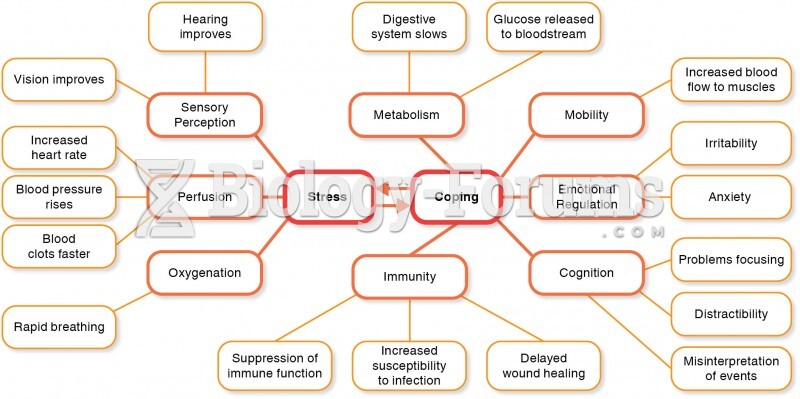Answer to Question 1
T
Answer to Question 2
The first behavioral explanation for phobias was supplied by Watson and emphasized classical conditioning. If a formerly neutral (conditioned) stimulus is paired with a conditioned stimulus that elicits fear, the conditioned stimulus will, in time, have the capacity to elicit fear itself. As in the Watson's Little Albert experiment, the sight of white fur was paired with a loud noise and came to produce crying on its own. Research has found that emotional distress can be conditioned in this way. Furthermore, increasing evidence indicates that emotional reactions can be conditioned through enhanced activation of the fear network involving the amygdala and the medial frontal cortex. However, conditioning can be limited by preparednessthe fact that some stimulus associations are more easily made than others. Therefore, biological predisposition may make the development of some phobias (machinery, for instance) less likely than others (small animals).
Observational learning agrees with the conditioning approach that phobias stem from experiences in the world and stimulus-response connections. However, observational learning argues that fears can be learned through indirect rather than direct conditioning. Experimental research suggests that fears can be learned this way, and neuroimaging research indicates an activation of the amygdala when participants observed a fear conditioning experiment.
An even more indirect way of developing phobias is to have a fear-inducing way of thinking. Some researchers argue that people with phobias have negative thoughts and develop fears when they listen to themselves. Fears are dramatically reduced when such negative thoughts are challenged and removed.
It is possible that these three factors interact to explain many phobias. Whether by direct or indirect conditioning, people develop a fear response to specific stimuli. Those who are most vulnerable to such conditioning may have a predisposing tendency to think fearful and negative thoughts. Alternatively, once they have experienced a conditioning episode, those who adopt such negative thoughts make themselves more fearful and responsive to any further conditioning experiences.







